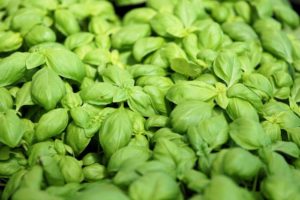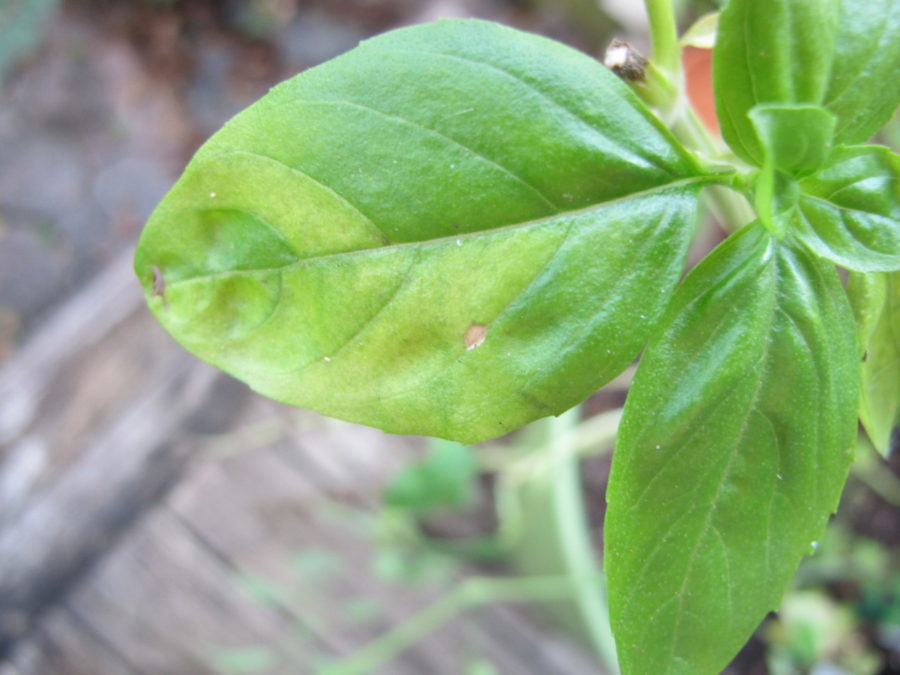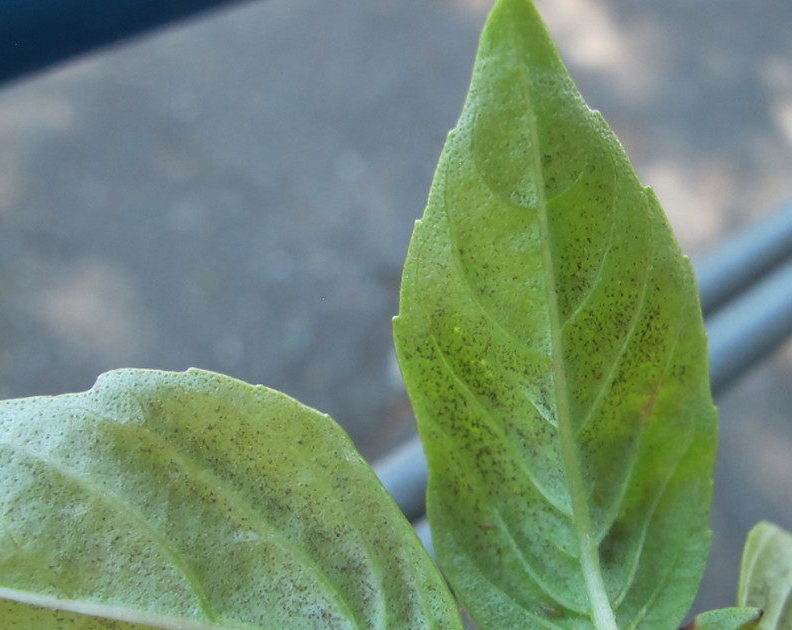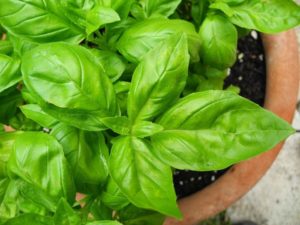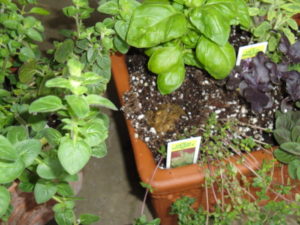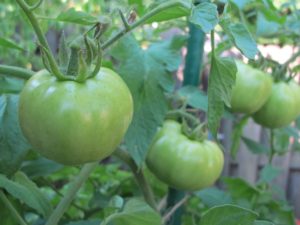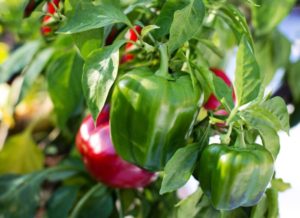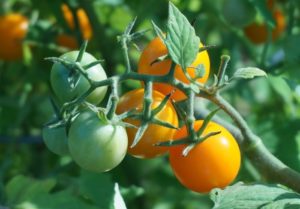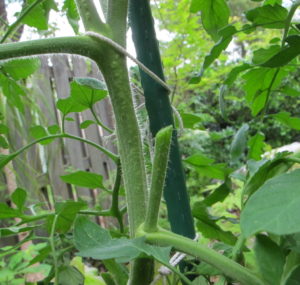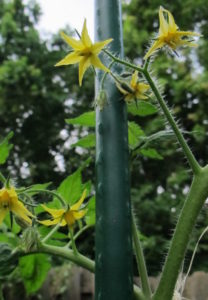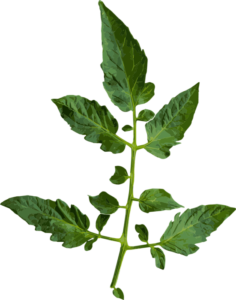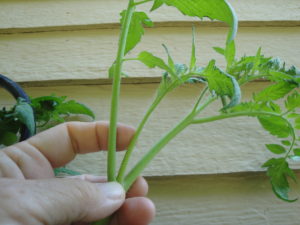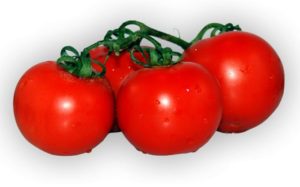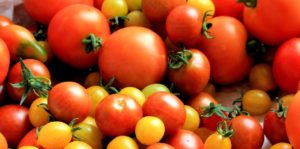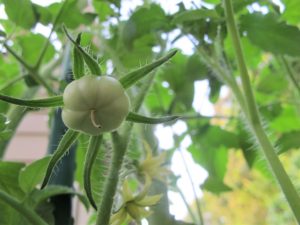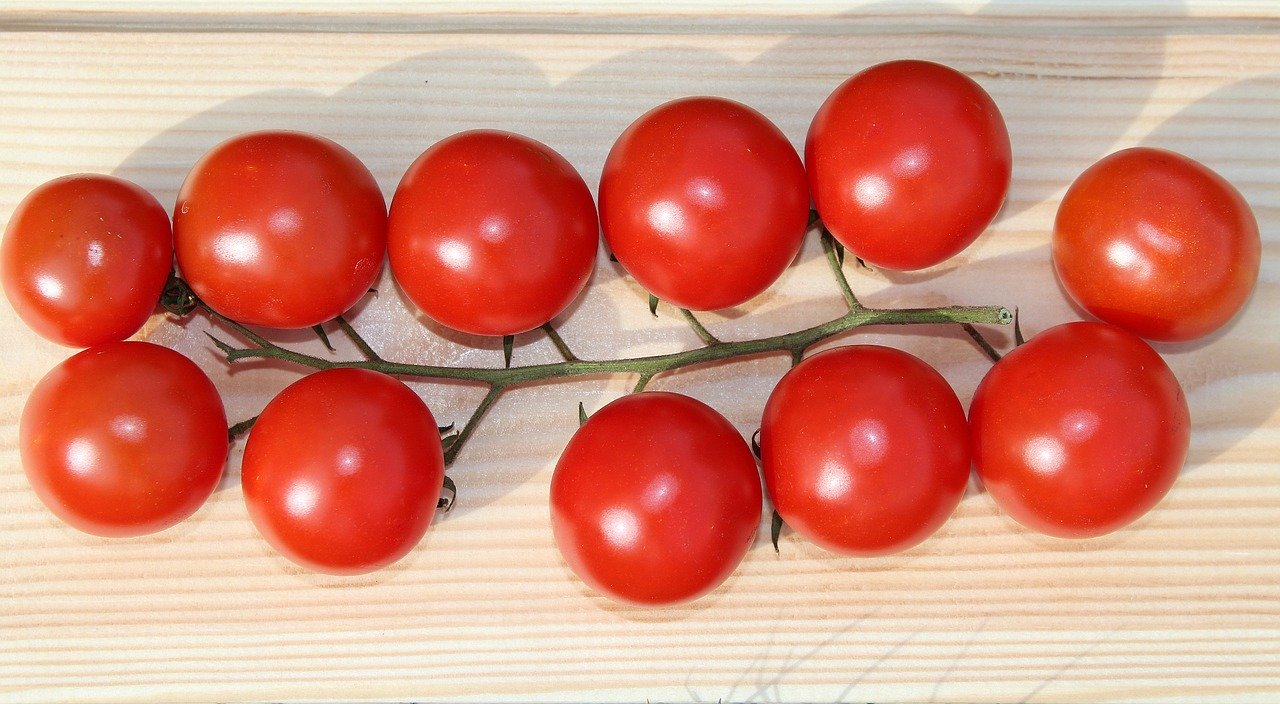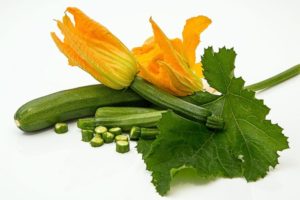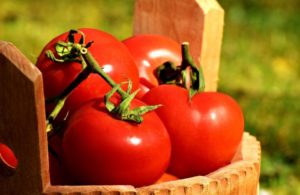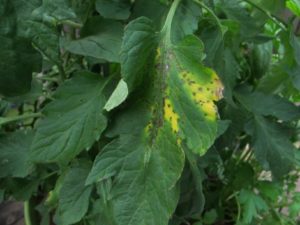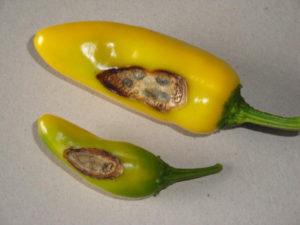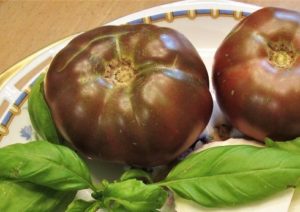2018
Basil Downy Mildew In the U.S.
Basil downy mildew is a devastating disease caused by the pathogen Peronospora belbahrii. This disease has been active in the United States since 2007, and for several years before that in Europe. BDM is thought to have originated nearly 90 years ago in Africa.
This water mold targets a very specific host—basil. Just basil. There are related species that attack other members of the Lamiaceae family, such as coleus, but it’s basil I’ll concentrate on today.
I’m writing about it now because some of you might have given up growing basil. If you’ve struggled with it the last few years, I’m going to offer some tips so you can once again enjoy your home-grown basil. And then I’ll share my favorite Tomato-Basil Salad recipe, a summertime staple around here.
Symptoms Of Basil Downy Mildew
Let me begin by describing the symptoms of BDM. The plants might start the season looking great, all green or purple and… oh, that fragrance!… You probably harvested several clippings, using them in salads, on pizza, in tomato sauce. What’s summer without fresh basil?!
And suddenly it went downhill from there. The leaves developed blotchy yellow or pale green sections between the main veins. The discoloration then spread over most of the leaf surface. The leaf reverse (the lower surface) was covered in a fuzzy gray film early the next morning, followed by little black dots.
Those tiny black specks are the fruiting structures (sporangia) of basil downy mildew. They puffed out microscopic spores that were carried on the breeze to infect other basils. The plants became spotty overall, and never regained their strength.
In only a few days, the affected leaves turned yellow. Some of the tips of the stems remained green, but, eventually, they, too, showed symptoms. And most of the leaves dropped off.
You fertilized, you spoke kind, encouraging words. And you commiserated with friends. Yet nothing helped. How disappointing!
- Center leaf beginning to grow pale.
- Black sporangia on reverse.
Spores and Relative Humidity
All is not lost. With some insight into how this disease works, you might be able to stop the progression of BDM and get more mileage out of your plants. Another option is to start with healthy new transplants and take precautions so it doesn’t happen again.
You might have noticed that basil downy mildew started showing up and spreading quickly during wet or humid weather. Good observation! In fact, spores require around 85% relative humidity for a few hours in order to germinate.
Even if the weather is quite dry or only slightly humid, the basil still can become infected. How? As the nighttime temperature drops, the relative humidity climbs. After a period of high humidity, the spores begin to germinate on susceptible varieties of basil.
Let’s say the daytime temperatures are in the 80’s F, with comfortably low humidity around 40%. With no rain in the forecast, you might think you’re in the clear. The problem is that the period of time just before dawn is when the relative humidity is at its highest reading of the day. It could easily reach 90%! The lower the temperature drops during the night, the higher the relative humidity rises.
So…limiting humidity around basil can keep the plant just outside the reach of the disease. If you live in an area that gets extremely hot and dry in the summer, your basil might survive unscathed. That’s happened only 2 or 3 times in my gardens since BDM started showing up in the mid-Atlantic and southern states.
Reducing Humidity
How do you limit the humidity? Simple! That’s why I’m writing this now, before everyone gets their basil plants into the garden. Here are some suggestions for you:
Basil grown in the garden should be situated in an area with excellent air circulation. Don’t plant it in the middle of a bed, with neighboring plants all around, or next to a fence.
Planting basil near a paved surface, or surrounded by paved surfaces, has the benefit of having less square footage that’s able to absorb moisture. The goal is to reduce as many sources of moisture as possible. And that includes overhead watering! If you’ve read the posts about tomatoes, you’ve learned the importance of keeping foliage dry.
BDM can show up in one neighborhood while entirely missing the next one. It might not appear at all if the summer is very hot and dry and if the nights don’t cool down very much. Or it might not show up until rain returns after a long, dry summer.
Certain weather conditions, such as frequent rainstorms and persistently high humidity, foster the widespread and enduring presence of basil downy mildew. Once the spores are in the air, growing basil is a lost cause… Or is it?
The Ultimate Solution: Potted Basil
Basil grows well in containers. An airy exposure up on the deck could be a good spot for it. Or sitting on a brick patio, or under the umbrella when it’s especially hot. Check your plants every day for those tell-tale light-colored blotches, and remove those leaves immediately.
If it looks like a losing battle, move the pot indoors for the night. That’s right! Get used to it if you want to—no, must—have fresh basil.
As long as you’re not living in the middle of a bog, the humidity indoors will never reach the levels required to grow BDM. And then place the basil back outside the next morning. On rainy days, keep the potted basil indoors, in a bright spot. Yes, it’s work, but worth the effort.
A few varieties of basil don’t get the disease, and plant breeders are working feverishly to bring more to market. Naturally, all of my favorites, including ‘Genovese’, ‘Yevani’, ‘Mrs. Burns’ Lemon’, ‘Tuscany’, and ‘Siam Queen’ DO get basil downy mildew. And, yes, I DO bring in the potted plants at night once the disease has reached the area or before rainy weather comes near.
Those that, in my experience, seem to be resistant are ‘Cardinal’, ‘Kapoor tulsi’ (holy basil), and ‘African Blue’ basil, but they’re not my favorites in the kitchen. ‘Eleonora’ is another that has been advertised as having “intermediate” resistance, but I have seen advanced cases of BDM on this variety.
(***Update***: New cultivars developed by Rutgers University will be worth trying. Look for ‘Rutgers Devotion DMR’, ‘Rutgers Obsession DMR’, ‘Rutgers Passion DMR’, and ‘Rutgers Thunderstruck DMR’. I grew ‘Rutgers’ Obsession DMR’ outdoors all summer, in 2021, and still have a cutting growing in the kitchen window. This variety did not develop any symptoms of BDM. Success! 1/22/2022)
Always remember: when you think about basil, think about how relative humidity can affect its health.
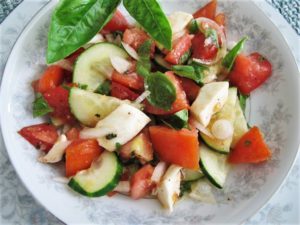
Tomato-basil salad.
Tomato-Basil Salad
Here’s a recipe for Tomato-Basil Salad, like Caprese salad, but with extra bits:
- Ripe tomatoes, cut into chunks, juice included
- Yellow or white onion, thinly sliced
- Cucumber, alternately-peeled (no need to peel the thin-skinned ‘Diva’), halved and sliced
- Mozzarella cheese, medium chunks
- Sweet basil, usually ‘Genovese’ for us
- Extra virgin olive oil
- Red wine vinegar, or white wine vinegar if you prefer
- Fresh Italian oregano, chopped; dried will work
- Salt and pepper to taste
Measurements aren’t that important. Tomatoes are the main ingredient, and you can use all reds or mix the colors. Not too much onion. Certainly enough basil, and don’t use so much oregano that it overpowers the rest. Mother likes hers more vinegary. Oh, and get a nice loaf of bread for dunking. Enjoy!
